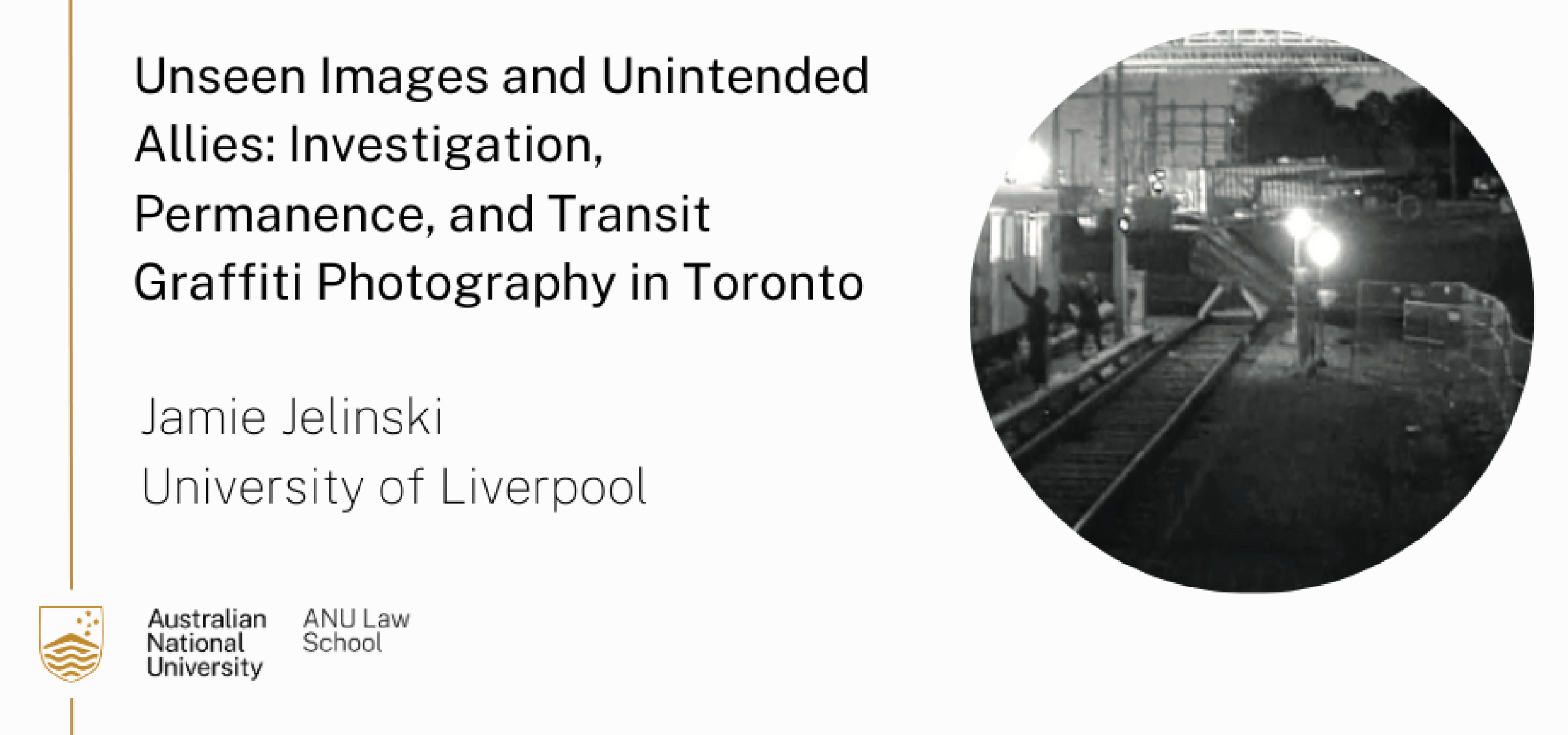
Date & time
Venue
Phillipa Weeks Staff Library, L4, Building 7, Fellows Lane, ANU Law School
Register for the event
Event description
On nearly a weekly basis, graffiti is clandestinely applied to the exteriors of parked subway trains in Toronto. Although the paint is removed within hours, another form of image production emerges in its aftermath. Using evidentiary photographs and coinciding incident reports obtained through Ontario’s Municipal Freedom of Information and Protection of Privacy Act, this presentation examines the management and conservation of mass transit graffiti. It argues that, in their efforts to investigate graffiti, transit agencies like the Toronto Transit Commission have become the primary conservators of this form of illicit image-making. This paper offers an unconventional perspective on transit graffiti, drawing on the words and images of the authorities who encounter it most. Through their extensive documentation and oversight of a substantial digital archive, the paper will demonstrate how graffiti—often viewed as highly ephemeral—is effectively rendered permanent by the same authorities who aim to prevent it.
Speakers

Jaime Jelinski
Jamie Jelinski is an incoming Lecturer in the Department of Communication and Media at the University of Liverpool. He earned his PhD in Cultural Studies from Queen’s University and has held postdoctoral fellowships at McGill University, Dalhousie University, and the University of Toronto. Jelinski’s first book, Needle Work: A History of Commercial Tattooing in Canada, was published in 2024 by McGill-Queen’s University Press. He is currently writing a second book, under contact with Wilfrid Laurier University Press, provisionally titled Unseen Images: Crime, Visual Culture, and Access to Information in Canada. He is also conducting research for two major projects: one examining the Royal Canadian Mounted Police’s production of facial composites from the 1950s onward, and the other exploring the use of visual culture at Quebec’s forensic crime laboratory in the early twentieth century.